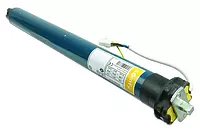Projection Screen Advice
Choosing the right type of screen
Broadly speaking projection screens fall into two categories, portable and fixed installation. Initially which type of screen you require will be determined by circumstance. If you are looking to set up a screen permanently then choose a fixed installation type, if you need to be able to rig and de-rig a screen as required then you need portable.Fixed Installation Screens
Screens that you install permanently are referred to as fixed installation. Examples include fixed frame, manual pulldown and tab tensioned amongst others. Which type you choose boils down to personal preference, budget and ease of installation.
Sapphire Mayfair manual screen

Somfy tube motor
There is an interesting variation on electric screens known as Variable Aspect Ratio Screens. These allow you to change the aspect ratio of the screen to match whatever source you are watching. For example DVD are commonly available in 4:3 (Video), 16:9 (Widescreen) and 2.35:1 (Cinemascope) aspect ratio, each of which can be watched on a variable aspect ratio screen without loosing the black borders around the image (we'll discuss the importance of the black border later in the article).
Euroscreen Linea Tab-tensioned screen
Fixed frame screens are the ideal solution for dedicated projection rooms or where the screen does not need to retract when not in use. They are assembled from four lengths of aluminium which form a fixed rectangle over which the screen fabric is stretched. Once fixed to the wall the screen form a perfectly flat surface ensuring perfect image geometry.
Portable Screens
For the presenter on the move, or any situation where a screen cannot be permanently installed, a portable screen is the solution. They are available in a number of different forms from basic pull up screens to folding frame and truss frame.
Harkness tripod screen
An interesting alternative to tripods are pull-up screens. These are a long (width of screen plus a few inches) tubes that lie on the floor and you simply pull the screen surface up. Of all the portable screens these are probably the easiest to set up but are heavier than the equivalent size tripod and suffer from the same potential rippling of the surface.
Folding screens are designed for heavy use or large applications. They are available from 6ft to around 25ft wide in 4:3 and 16: aspect ratios in front and rear projection forms. They are made up of an aluminium frame to which the screen fabric is attached and adjustable height legs. Assembly takes place on site and they can be folded down into supplied carry cases.
©Ken Davies, Ivojo Multimedia Ltd.